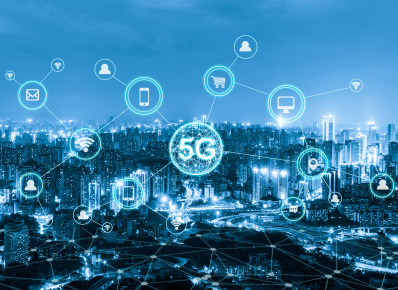The advent of 5G technology promises a transformative shift in the landscape of connectivity, particularly for the Internet of Things (IoT) and the development of smart cities. With its unparalleled speed, ultra-low latency, and massive capacity, 5G is poised to revolutionize how devices communicate and interact within urban environments. In this article, we delve into the profound implications of 5G on IoT deployments and the evolution of smart cities.
Smart City Evolution:
- 5G’s lightning-fast speeds and low latency enable seamless connectivity among IoT devices, facilitating real-time data transmission and analysis.
- This enhanced connectivity fosters the proliferation of IoT applications across various domains, including transportation, healthcare, energy, and infrastructure.
IoT Ecosystem Expansion:
- The high bandwidth and low latency of 5G networks enable the deployment of a more extensive array of IoT devices, ranging from sensors and actuators to autonomous vehicles and drones.
- This expansion of the IoT ecosystem fuels innovation and opens up new possibilities for leveraging interconnected devices to optimize urban operations and enhance quality of life.
Smart City Evolution:
- 5G serves as a foundational pillar for the development of smart cities by enabling robust communication networks capable of supporting diverse IoT applications.
- Through the deployment of IoT sensors and connected infrastructure, cities can collect and analyze vast amounts of data in real-time to improve urban planning, resource management, and public services.
- Smart city initiatives leveraging 5G technology encompass a wide range of applications, including smart transportation systems, intelligent energy grids, environmental monitoring, and public safety enhancements.
Accelerated Innovation:
- The high-speed, low-latency connectivity offered by 5G accelerates innovation cycles by facilitating rapid prototyping, testing, and deployment of IoT solutions.
- Startups and enterprises alike can leverage 5G networks to develop and scale innovative IoT applications that address pressing urban challenges and drive economic growth.
Challenges and Considerations:
- Despite its transformative potential, the widespread adoption of 5G in IoT and smart cities faces several challenges, including infrastructure requirements, spectrum allocation, security concerns, and regulatory issues.
- Addressing these challenges necessitates collaboration among stakeholders, including governments, telecom providers, technology vendors, and urban planners, to ensure the seamless integration of 5G-enabled IoT solutions into urban environments.
Conclusion:
The convergence of 5G and IoT heralds a new era of connectivity and innovation, with profound implications for the evolution of smart cities worldwide. By leveraging the speed, capacity, and reliability of 5G networks, cities can unlock the full potential of IoT technologies to enhance efficiency, sustainability, and livability. However, realizing this vision requires concerted efforts to overcome technical, regulatory, and logistical challenges, paving the way for a smarter, more connected future.

